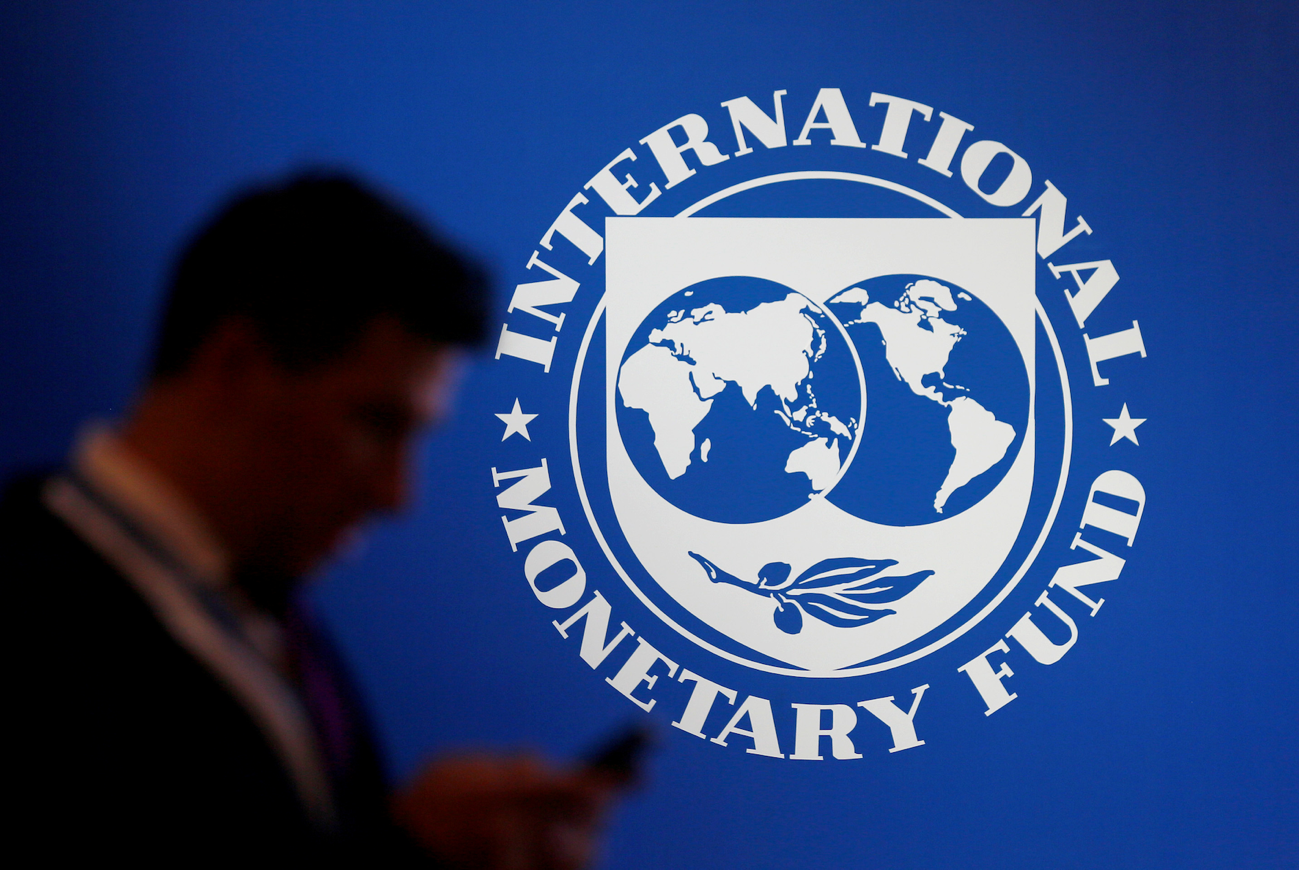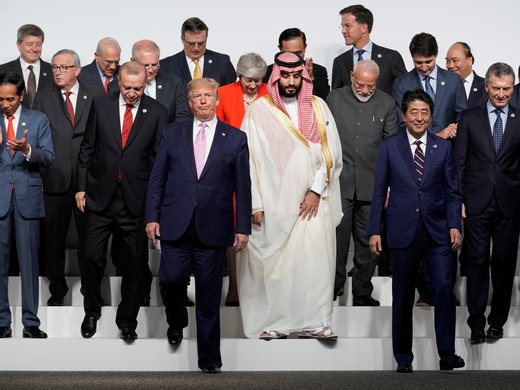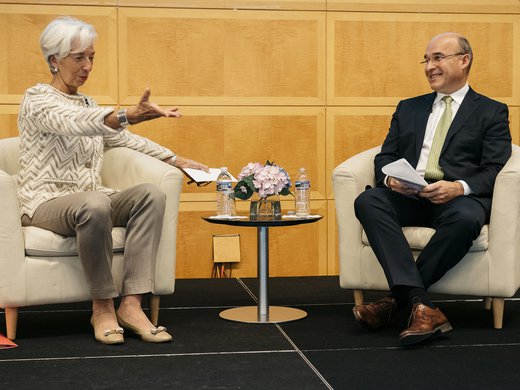Kyiv and Moscow are a long way from New Hampshire, but their conflict might — and it should — accelerate a drive toward a “new Bretton Woods.”
The world economy has been in various stages of nearly continuous crisis ever since the collapse of the Bretton Woods system of international cooperation in 1973. A massive growth in cross-border financial flows, the growth of trade in services, and the evolution of digital products have made it far more difficult than ever to stabilize international exchange. The COVID-19 pandemic brutally exposed the fragility of global supply chains and just-in-time inventory management. Now the war in Ukraine has elevated the emergency to a much higher level. No longer is it possible to hope that simmering clashes between competing value systems in China, Russia, the European Union, the United States and elsewhere can be reconciled through existing multilateral institutions, most of which were designed almost eight decades ago during the Second World War. Is it now time to reform or replace the system of international economic governance? Once this war ends, will it be possible to devise a viable path forward?
The Path to Cooperation
The United Nations Monetary and Financial Conference, which was held at Bretton Woods, New Hampshire, in July 1944, set the stage for a resumption of international economic and financial cooperation after the Second World War. The conference had three principal achievements.
First, it created the International Monetary Fund (IMF) and the World Bank, multilateral institutions designed to help member countries re-establish open and stable trade and finance, rebuild the infrastructure that was destroyed by the war, and promote economic development. Bretton Woods likewise helped set in motion negotiations that led in 1949 to the creation of the General Agreement on Tariffs and Trade (GATT, the predecessor to the World Trade Organization).
Second, the conference enshrined Keynesian macroeconomics and international cooperation as the basis for policy formulation. In the words of the IMF charter, a purpose of the institution was “to contribute … to the promotion and maintenance of high levels of employment and real income and to the development of the productive resources of all members as primary objectives of economic policy.”
Third, it replaced the already defunct international gold standard with a more flexible system in which the only monetary role for gold was to underpin the stability of exchange rates between currencies. Countries were expected to maintain the value of their currencies against either the price of gold or the US dollar, but they could adjust the exchange rate when necessary.
After nearly eight decades, most of the Bretton Woods structure remains in place. Only the exchange rate rules are missing, having been abandoned in 1973. By then, the spread of economic growth in dozens of countries around the world had made the dollar-based system no longer viable, and gold had proved to be too rigid to serve as an anchor for stability. The new question was what, if anything, could replace the Bretton Woods system of “fixed but adjustable” exchange rates. If neither gold nor the US dollar could anchor international exchange, was the world economy doomed to live with instability, volatility and recurring financial crises?
No longer is it possible to hope that simmering clashes between competing value systems in China, Russia, the European Union, the United States and elsewhere can be reconciled through existing multilateral institutions, most of which were designed almost eight decades ago during the Second World War.
The quest for a new Bretton Woods system began as soon as the old dollar/gold rules imploded, and it continues to this day. The history of Bretton Woods, and of the lingering but repeatedly frustrated desire to update it, can help guide the global response to the breakdown of order that is being produced by Russia’s attack on Ukraine. Five key lessons emerge from this history.
Lesson One
Major reform is practically impossible unless precipitated by a major crisis. For the first few years after 1973, the goal for those who pleaded for a new Bretton Woods was simply to restore stability of exchange rates. That effort failed. Sharply rising oil prices and persistent high unemployment were widespread crises, but achieving exchange stability was simply not feasible in such conditions. The goal then broadened to encompass the whole governance system, again without much success. As the world economy became increasingly dynamic, interconnected and complex without a correspondingly dramatic evolution in the institutional structure of governance, national leaders of the largest countries coped by forming various ad hoc and informal groups to meet at ministerial and summit levels and attempt to guide policy actions cooperatively. Until 1999, these steering committees were limited in size, from five to 10 countries. A quantum leap then occurred with the creation of the Group of Twenty (G20), which brought together the finance officials from the larger industrial countries and emerging market economies under the initial chairmanship of the finance minister of Canada, Paul Martin. The institutional (treaty-based) structure of governance, however, was largely unchanged. Institutionally, the only major evolutionary change in the 1990s was the establishment of the World Trade Organization as a successor to the 1940s-era GATT.
The Latin American debt crisis of the 1980s and a series of financial crises in emerging market countries in the 1990s triggered strong popular outcries against the Bretton Woods institutions. “Fifty years is enough” became a rallying cry, but reform attempts remained either stillborn or fragmented. This cycle culminated in 2008 in the onset of a global financial crisis and what became dubbed the Great Recession. In response, the president of France, Nicolas Sarkozy, called for a complete overhaul of the system, “comme on le fit à Bretton Woods.” His appeal was quickly supported by the British prime minister, Gordon Brown, and other European leaders. The US president, George W. Bush, responded by convening the first meeting of the heads of government of the G20 countries. The most visible reform produced by the initial G20 summit in 2008 was the conversion of the Financial Stability Forum into the Financial Stability Board, with a strengthened mandate and an expanded membership. These summit meetings became annual events, but when the global financial crisis faded away and the world economy recovered from the downturn, Sarkozy’s appeal for a new Bretton Woods was forgotten.
The current crisis may also fade away, but it is fundamentally different from earlier episodes in that it has already undermined the cooperative structure of the world’s principal multilateral institutions. It seems unlikely that the G20 can continue to guide the evolution of global governance, when it relies on reaching consensus between the main industrial countries and the so-called BRIC countries (Brazil, Russia, Indian, and China) and other large emerging markets. Some leaders are calling for the G20 to expel Russia, while several from emerging market countries are refusing to condemn the invasion of Ukraine and are opposing any move to punish Russia. A consensus outcome is difficult to imagine.
The Bretton Woods conference succeeded because the Second World War made creation of a new system imperative. We may now be in a commensurate crisis.
Lesson Two
It is easier to establish a new system than to repair a broken one. Resistance to systemic reform does not arise from a belief that the present architecture cannot be improved, nor even from a belief that the status quo is acceptable. Resistance comes from the fact that any helpful reform will reduce the influence and power of countries near the apex of the existing structure. In 1944, there was no existing structure, and the United States convened the Bretton Woods conference to create one out of whole cloth. Once the new system was operational, it could evolve gradually but could not readily be restructured more fundamentally.
Perhaps the clearest example of the repair problem is the UN Security Council. The United Nations Charter of 1945 accorded permanent veto powers to the five countries that dominated the allied victory in the Second World War: the United States, the Soviet Union, the Republic of China, the United Kingdom and France. Today, the Russian Federation and the People’s Republic of China hold these powers as successors to the Soviet Union and the Republic of China. If the charter were updated, consideration would naturally be given to affording the same status at least to Germany and Japan. Perpetuation of the 1945 agreement has rendered the Security Council nearly impotent throughout much of its existence, but the amendment process is too unwieldy to permit meaningful change. The stalemate can be overcome only with a total systemic renewal.
The Bretton Woods conference succeeded because the Second World War made creation of a new system imperative. We may now be in a commensurate crisis.
Lesson Three
It is more practical to create a system for allies alone than to create a universal system. When the United States convened the Bretton Woods conference, it invited all 44 countries that were allied in the war against the Axis. Besides the Axis countries, neutral countries such as Argentina were also excluded. This exclusiveness enabled a commonality of purpose that contributed greatly to the conference’s success. The resulting institutional charters provided for applications from other countries when they were prepared to accept the obligations of membership. Eventually, both the IMF and the World Bank became nearly universal organizations. Although that flexibility has had its advantages and has helped bring many countries into closer economic relationships with the founding members, it has led to a system in which consensus is increasingly difficult to achieve.
Throughout the Cold War era, the Soviet Union chose to stay out of the Bretton Woods institutions. After the dissolution of the Soviet Union at the end of 1991, Russia, Ukraine, all 13 other successor states, and all Soviet allies in Central and Eastern Europe rapidly joined both the IMF and the World Bank. That began an era in which it seemed possible to enjoy a system of governance in which virtually all countries would participate cooperatively, notwithstanding major differences in attitudes toward democracy and free markets. That era now appears to be closing, and it is at least possible that Russia’s invasion of Ukraine will be the spark to combust the remains of the postwar international architecture.
In 1997, the large industrial countries of the Group of Seven (G7) invited Russia to join its summit grouping, turning it into the Group of Eight. Russia also participated from the outset in ministerial and summit meetings of the G20. Russia was on a democratic path and was eager to play a positive role alongside its great-power peers. Russia’s annexation of Crimea in 2014 forced the G7 to suspend it from further participation. The G20 has not yet responded similarly to the invasion of Ukraine, but the almost universal condemnation of the aggression is likely to solidify the treatment of Russia as a pariah state for the foreseeable future. Even though Russia’s expulsion from the Bretton Woods institutions would be far more problematic, it is difficult to envision the continuation of business as usual. The IMF has already suspended Russia’s representative from his post as dean of the Executive Board.
The exclusion of certain state actors from multilateral institutions and informal country groups need not preclude the continuation of universal participation in non-governmental organizations. Part of the shift toward multipolarity in international relations has been the emergence of civil society as a major stakeholder in global governance, especially for issues such as climate change, individual privacy and freedom of expression: issues that are not inherently economic or political but that have great importance for the world economy and for cooperation between countries with divergent value systems. As governmental cooperation is forced to become fragmented, the ability of private agents to continue to interact and influence governments will be of vital importance.
Lesson Four
All potential participants must be included in the planning. The process for planning the postwar system of financial governance became a major dispute between the United Kingdom and the United States in 1943–44. On the British side, John Maynard Keynes wanted to cook up a deal between the two countries and then present it to the rest of the alliance for acceptance. Many participants on the American side, particularly in the State Department and the Federal Reserve System, agreed with that approach. In the US Treasury, however, Harry Dexter White insisted on including as many countries as possible in the early stages and then holding a conference of the full alliance to finalize the agreements. White won the day, and his inclusive strategy succeeded. The entire alliance signed on to the agreements at Bretton Woods, and almost all allies joined either at the outset or shortly afterward.
If a comprehensive reform is to be achieved, it can only be through a broad exercise that encompasses many countries with similar objectives and excludes those that do not.
The world economy today is more multipolar, with China, the United States and the European Union as major economic powers. Even before the war in Ukraine, it was quixotic to think that these nations could agree on and abide by a set of rules governing trade and financial relations. China’s perspectives and interests are notably distinct from those of North America and Western Europe, and differences between European and American interests also are not easily reconciled. If a comprehensive reform is to be achieved, it can only be through a broad exercise that encompasses many countries with similar objectives and excludes those that do not. The G20 is the most readily available forum for this purpose, assuming that it can be slimmed down through the exclusion of (at least) Russia and that it can incorporate in some fashion the views and interests of the smaller and poorer countries not directly represented in the group.
Lesson Five
Reform must deal comprehensively with the practical problems of the time. Although Bretton Woods was a response to the collapse in the 1930s of the structure that had supported international trade and finance, the conference did not aim to restore that structure. The classical gold standard was no longer viable, the British pound sterling could not continue to underpin international finance, and tariff-free trade could not readily be restored. The goal in 1944 was to devise a new system in which the role of gold would be circumscribed, the US dollar would largely replace the pound at the centre of the system, and trade would be freed from restraint gradually through an orderly process. This revolution for the postwar era was a practical response to ongoing changes in global economic conditions.
Systemic reform in the 2020s must incorporate updates that reflect the key changes in international trade and finance of the last eight decades, and especially those of the twenty-first century. The hierarchy among nations in economic importance has evolved. Finance has become a much more important part of international exchange, as trade in goods has grown less rapidly. Digital commerce and the role of data as a distinct economic asset are new phenomena that require a corresponding evolution in governance and oversight, perhaps through an expanded mandate for an existing agency or — more effectively — through a new multilateral agency. More broadly, climate change is an overarching threat to the sustainability of international relations.
The post-Second World War systemic architecture has always consisted of several separate agencies operating in their own silos without comprehensive oversight or guidance. A reformed system for the era following the Russia-Ukraine war can be expected to be effective only if it is comprehensive enough to tackle aggressively the effects of these evolutionary changes and continuing shortcomings. The United Nations, its specialized agencies and other multilateral organizations have shown remarkable persistence since the end of the Second World War. Whether they can adapt to the shocks that are now upending the world that they were designed to manage, or whether they will need a more wholesale replacement, is the major issue that now challenges global cooperation.



